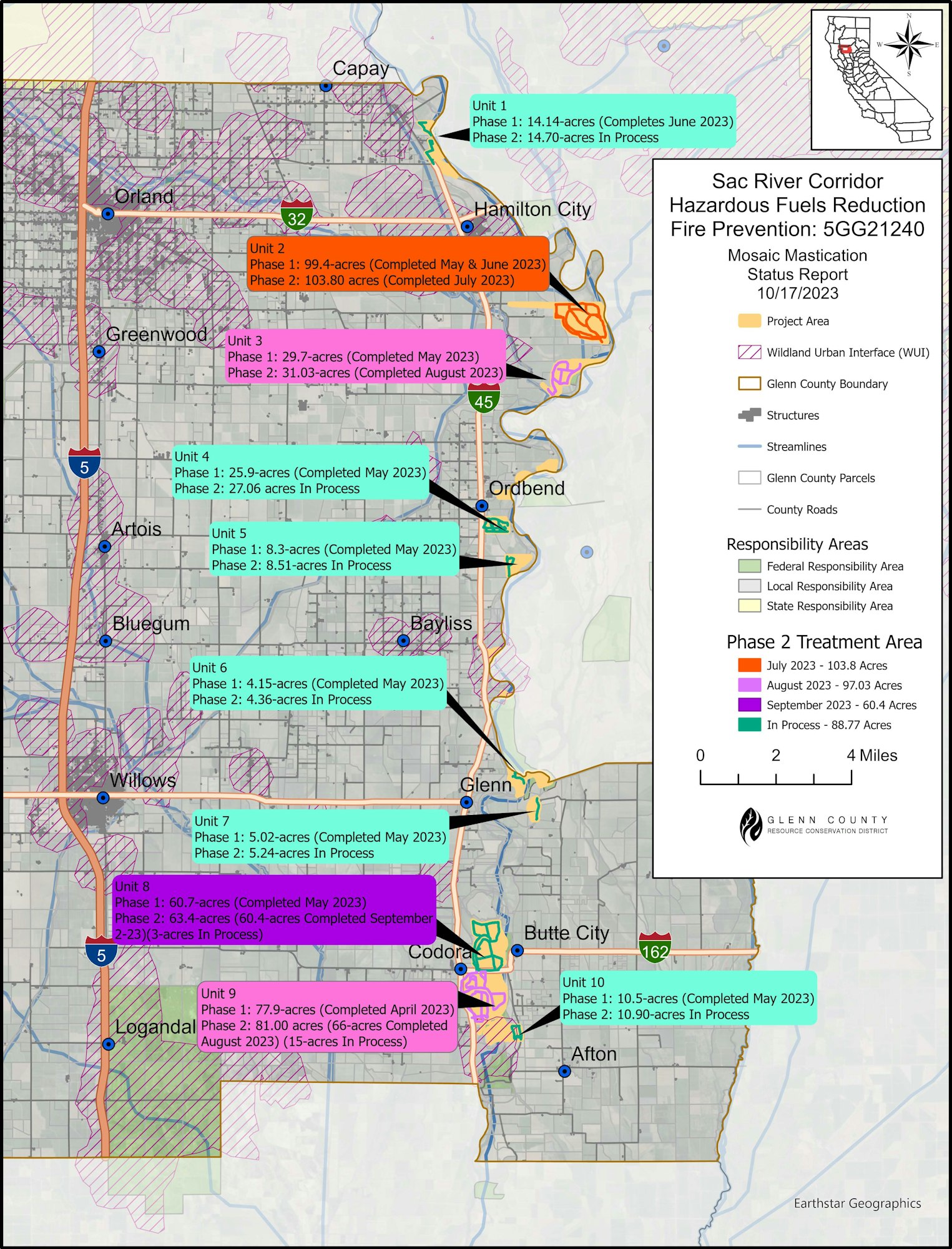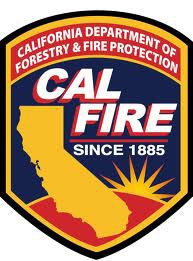Sacramento River Corridor Hazardous Fuels Reduction Project
The Sacramento River Corridor Hazardous Fuels Reduction Project (Project) was originally slated as a 340-acre fuels reduction project in eastern Glenn County, California. The project would provide mechanical (mastication) treatment to overgrown vegetation within the Sacramento River Corridor on 100% federal lands by establishing fuel breaks along existing roads, trails, public access areas, structures, and property boundaries.
In January 2022, the Glenn County RCD was approached by Sacramento National Wildlife Refuge Complex, U.S. Fish and Wildlife Service to help protect public and first responder access, safety, ingress, egress, and overall provide for wildfire prevention through a collaboration. NEPA had been completed in 2005, which was KEY! In August 2022, the Glenn County RCD received a CAL FIRE Wildfire Prevention Program (CCI) Grant, totaling $1,696,240. In addition to the funding provided by the grant, Sacramento National Wildlife Refuge Complex provided a Federal Match Totaling $605,000.
In January 2023, a Request for Proposals was released and in March 2023 Diversified Resources, Inc. was selected as the most qualified proposal coming in under Glenn County RCD’s budget. Through working with CAL FIRE, U.S. FWS and Diversified Resources, Inc., the project increased in # treatment acres to 690-acres of mastication and added a new treatment type to the original 340-acres, an herbicide application which offers longevity to project success. Herbicide application is critical to sustain wildfire prevention projects.
Glenn County RCD and partners will continue to monitor the project site through photo monitoring and GIS mapping as well as the U.S. FWS will maintain treated areas as needed to ensure public safety at its Sacramento National Wildlife Refuge Complex. It must be noted the project has become a model to refuges in California and even to neighboring landowners who are interested in implementing this type of wildfire prevention work on their private property.
Project Timeline

Initial Mastication (Before & After)












Mosaic Mastication (Before & After)








Project Status Map

FUNDER RECOGNITION


Funding for this project provided by the California Department of Forestry and Fire Protection’s Wildfire Prevention Program as part of the California Climate Investments Program.
Sacramento River Corridor Hazardous Fuels Reduction, is part of California Climate Investments, a statewide program that puts billions of Cap-and-Trade dollars to work reducing GHG emissions, strengthening the economy, and improving public health and the environment– particularly in disadvantaged communities. The Cap-and-Trade program also creates a financial incentive for industries to invest in clean technologies and develop innovative ways to reduce pollution. California Climate Investments projects include affordable housing, renewable energy, public transportation, zero-emission vehicles, environmental restoration, more sustainable agriculture, recycling, and much more. At least 35 percent of these investments are located within and benefiting residents of disadvantaged communities, low-income communities, and low-income households across California. For more information, visit the California Climate Investments website at: www.caclimateinvestments.ca.gov.
